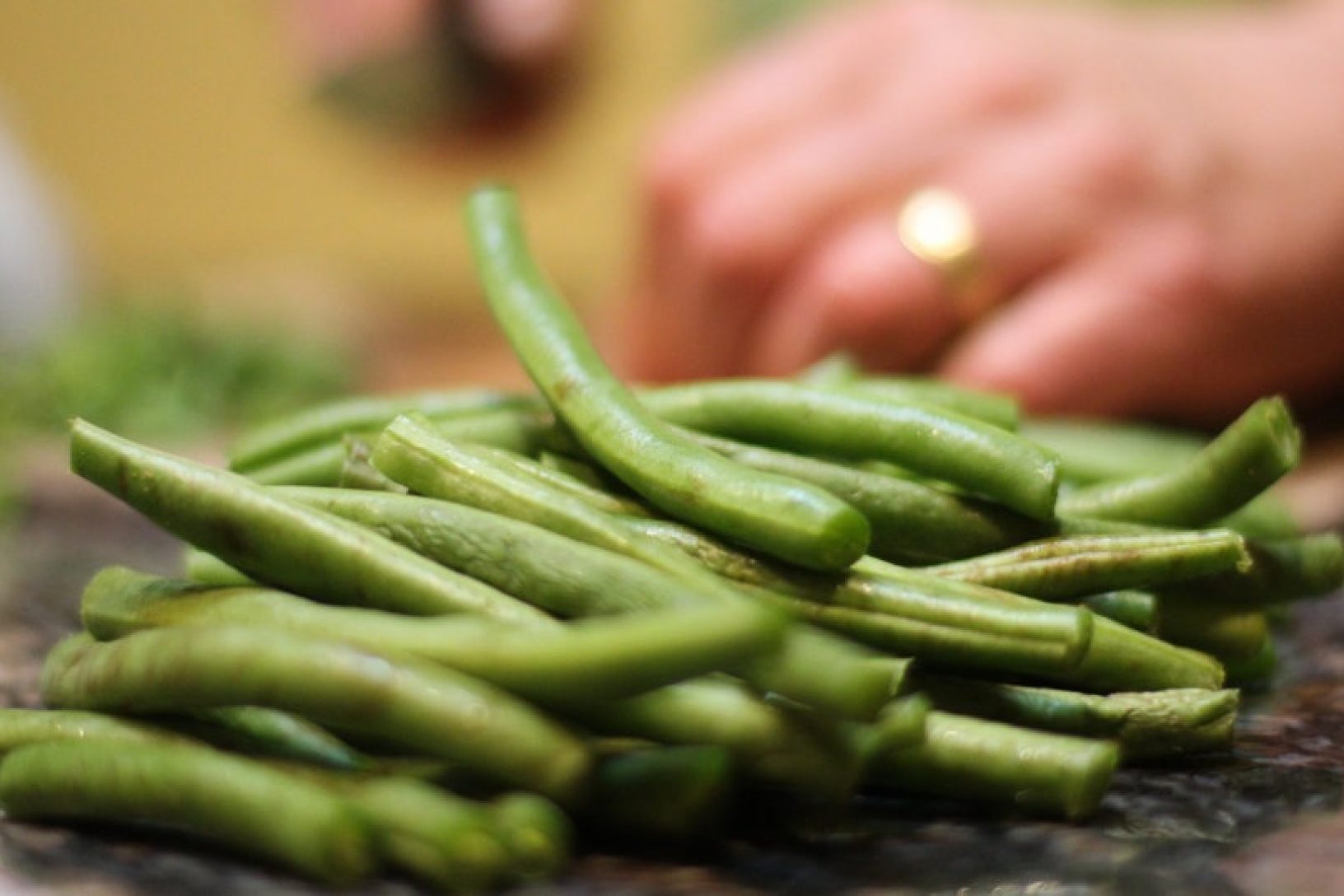Helpful information
Timing: April – July (sow), July – September (harvest)
Where to do it: Sow indoors, plant outdoors
Garden space: Small garden, large garden, balcony
Sun requirements: beans need a sunny spot

Timing: April – July (sow), July – September (harvest)
Where to do it: Sow indoors, plant outdoors
Garden space: Small garden, large garden, balcony
Sun requirements: beans need a sunny spot
French beans are either dwarf or climbing varieties.
Because dwarf French beans are small, you can grow them in pots or raised beds. You don’t need a lot of space in the garden.
Climbing French beans need a little extra effort to grow. This includes having a structure in place that they can grow up. They can be grown up a wall or fence, which is a great use of space, especially if you have a small garden.
French beans need warm temperatures, with no frost, to survive. If you want to grow beans earlier in the year, broad beans are tougher and can stand colder weather.
From sowing to harvesting, find advice to help grow your French beans.
Sowing seeds

Both dwarf and climbing French bean varieties are grown from seed.
For an early harvest, sow your seeds in modular seed trays from late April to early May.
When you grow something from seed to the plate, there’s a real sense of achievement
Mark, Thrive client gardener
You can also sow your seeds straight into the ground or into a pot or raised bed. Wait until late May through to July to do this, when there is no more risk of frost.
Sow your seeds into cardboard tubes (e.g., the inside of a toilet roll). Once the seeds have germinated, bury the tube in the ground, pot, or raised bed. This reduces the amount of bending required, or the fiddly job or removing young plants from a tray.
Planting out (if needed)
If you started your French beans in modular trays or small pots inside, they will need planting out. They should be ready for this a month or so after sowing seeds.
To get them used to being outside, first ‘harden them off'. You do this to get them used to the colder outdoor temperature. Take the seed tray outside and place it in a sheltered spot for a few hours a day, then bring it inside again. Around a week of this should get your plants ready for their new outdoor life!
You can now carefully take them out of their trays or small pots. Plant them into their final growing place (a big pot, raised bed, or in the ground). Choose somewhere sunny and sheltered from the wind.
All French bean varieties prefer nutritious soil. Use plenty of good quality compost when planting.
Sowing seeds in the ground can be quite physical, with a lot of bending. Take it slowly and have rests as needed.
Use a kneeler with handles if sowing seeds into the ground.
Caring for your beans

Climbing French beans need something to support them as they grow. They can grow tall – more than 2 metres in height. Some options are:
You can buy ready-made bean frames or climbing structures. Place these securely in the soil and plant your beans around them.
A wigwam cane support is available, which saves tying fiddly knots. This is a specially designed plastic support with holes for bamboo canes to go in.
If your climbing beans get too tall to comfortably reach, use your fingers to ‘nip’ the growing tip off. This should keep the plant at a manageable height.
All French beans need regular watering. Make sure the soil doesn’t dry out.
If French beans do not get enough water as they grow, the beans can end up a bit tough.
Harvesting beans

Your French beans will be ready to harvest from around July into early autumn. Exactly when will depend partly on when you sowed seeds. Dwarf French beans will be ready to harvest before climbing French bean varieties.
You can tell your beans are ready to harvest if they snap off easily when you gently pull them. They are likely to be around 10cm long at this point.
If you find it difficult to pull the beans off by hand, or are worried about damaging the plant, use a pair of scissors.
You are ready to tuck into your tasty bean feast! You can eat French beans raw, or boil for a few minutes to eat cooked.
Harvest your beans regularly. If you do, they should keep producing new ones for many weeks. Even more beans for you to enjoy – or share with others.
If your beans didn’t grow brilliantly this year, it could be for a number of reasons. They love heat and shelter – perhaps the place they were growing was not warm enough. Don’t worry – you can always try again next year.